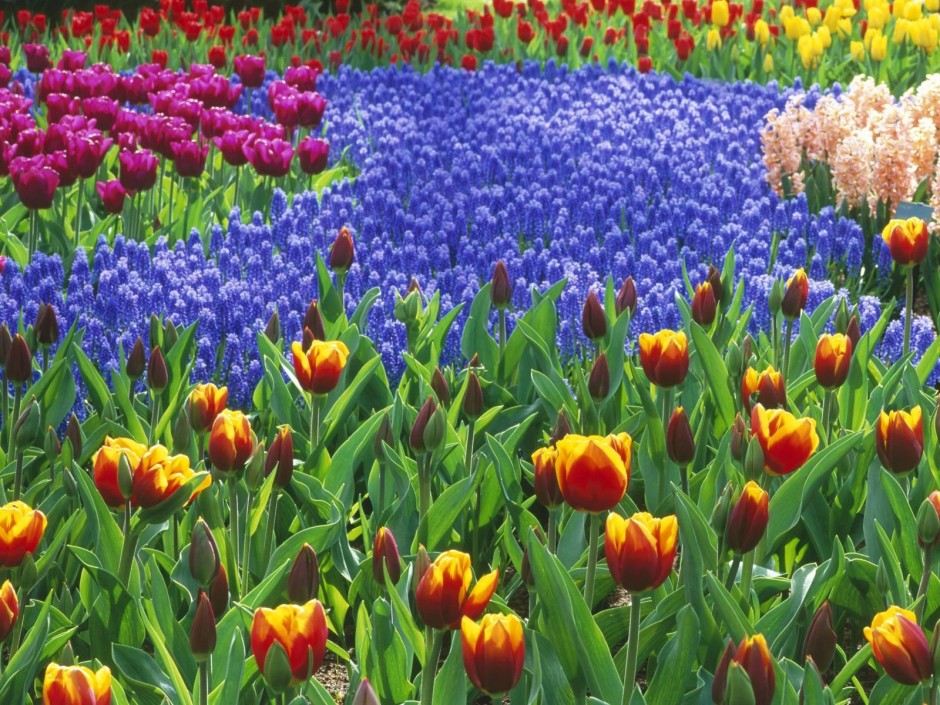Holland presents its prettiest face to the world in April and May, when it’s ablaze with a spectacular profusion of flowers.
After a long and dreary winter, spring finally arrives as Holland’s pancake-flat fields release beautiful blooms in hues ranging from red and yellow to violet and white.
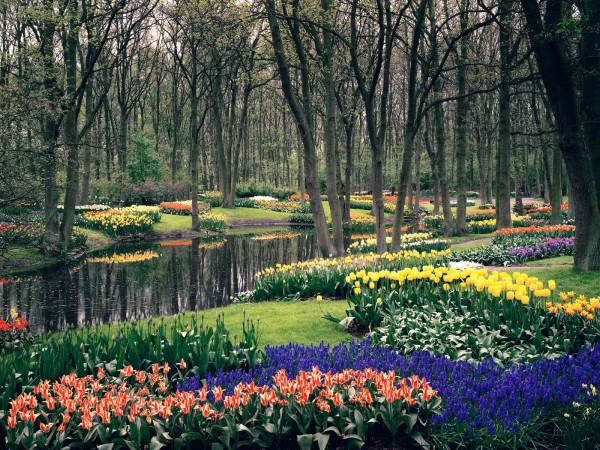
This enchanting annual rite of nature is best observed at the Keukenoff gardens in the town of Lisse, the center of Holland’s bulb and flower industry, 45 kilometres southwest of Amsterdam.
One of Holland’s most popular tourist destinations, the gardens are reportedly the world’s biggest and have attracted some 47 million visitors since 1949.
Founded by local growers to elicit interest in the joys of gardening, Keukenoff is a feast for the eyes and the nose, thrilling visitors with its vibrant colors and fragrant scents.
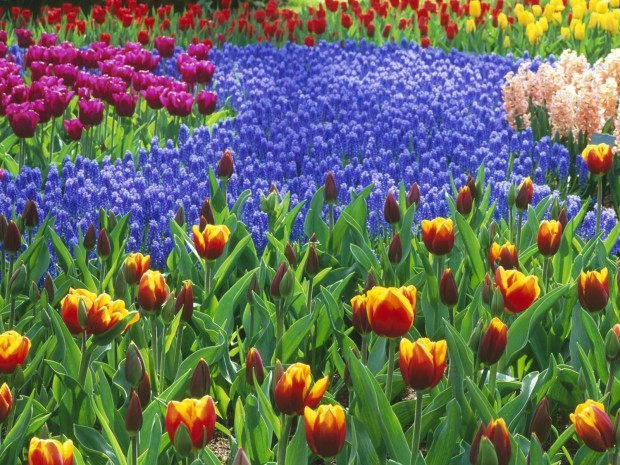
Open to the public until May 16, the gardens are a sight to behold. No less than seven million bulbs are planted, of which 4.5 million are tulips in 1,000 varieties.
The flowering sequence begins with crocuses and narcissi in March, followed by tulips, daffodils and hyacinths in May. Clearly-marked paths enable you to admire them in all their glory.
Pavilions on the manicured grounds contain magnificent garden shows.
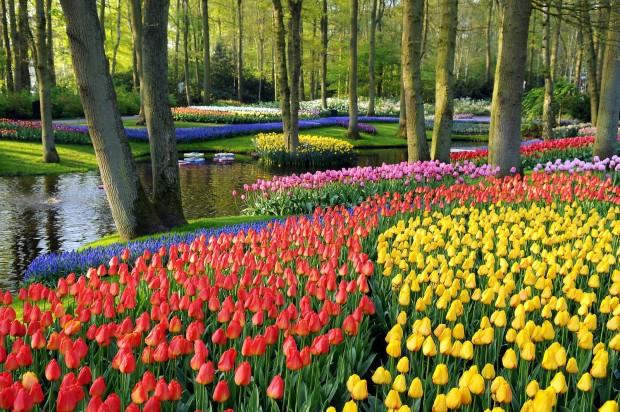
The Willem-Alexander pavilion displays potted flowers from cyclamens to hydrangeas with such names as Sensual Touch and Sexy Lady. From May 6-16, more than 30,000 lillies in 300 varieties reveal themselves.
At the Beatrix pavilion, white, purple, red and yellow orchids enthral visitors with their delicacy.
The Oranje Nassau pavilion is reserved for ornamental flowers like carnations, irises, asters, roses, amaryllis, begonias and chrysanthemums.
Keukenoff’s flowers are grown in fields covering about 20,000 hectares, the equivalent of 40,000 football pitches. You can see the symmetrical rows of purple, white, pink, red and yellow blooms from an observation tower of a Dutch windmill.
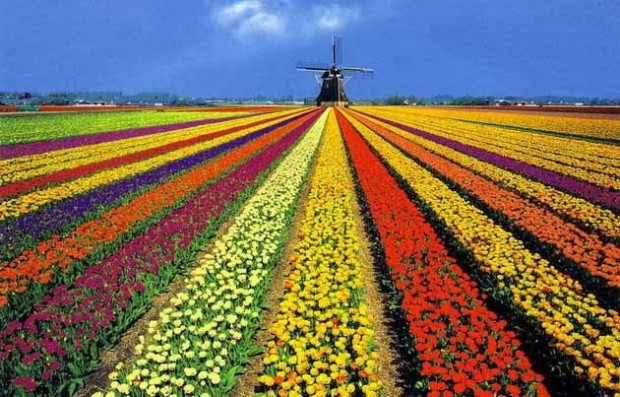
Three-quarters of the annual harvest of 10 billion bulbs are exported, mainly to the United States and Japan, but also to the European Union and Canada.
The bulbs are shipped to FloraHolland, the world’s largest cut flower and plant auction facility and distribution center. A cooperative owned by 6,000 Dutch growers, FloraHolland is in the town of Aalsmeer, a short drive from Amsterdam and Schiphol Airport.
FloraHolland, which is open to tourists, has almost one million square metres of floor space to accommodate the massive global trade in flowers and plants. Apart from Holland and a few neighboring countries, the flowers and plants shipped from Aalsmeer — a fertile region dotted with nurseries and experimental farm stations — come mainly from Israel, Africa and South America.
As you walk along a very long catwalk above the warehouse floor, which is at its busiest during the early hours of the morning, workers briskly move trolleys laden with flowers and plants.
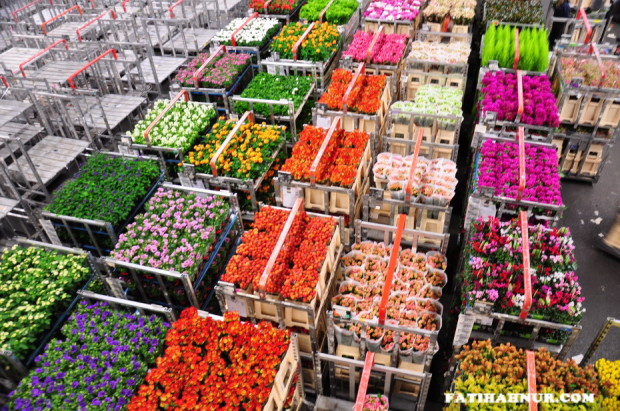
Signs in various languages, including French, Polish, Hebrew and Arabic, attest to the fact that flowers and plants are important international commodities. They arrive in the middle of the night, and by 10 a.m., agents have made their purchases for the day.
To ensure freshness, flowers and plants are promptly dispatched to cities near and far. Within 24 hours, they are ready to be sold in supermarkets in Berlin, garden centers in Paris or Toronto, shops in Moscow or Prague and floral kiosks in Tokyo, London and New York.
